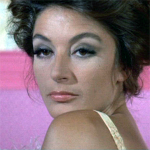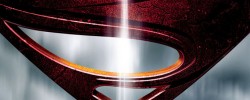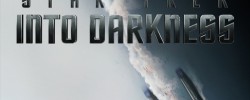
TIFF’s Bitter/Sweet The Joyous Cinema of Jacques Demy Review: Donkey Skin (1970)

Cast: Catherine Deneuve, Jean Marais, Jacques Perrin
Director: Jacques Demy
Country: France
Genre: Drama | Family | Musical | Romance
Editor’s Notes: The following review is part of our coverage for TIFF’s Bitter/Sweet The Joyous Cinema of Jacques Demy which runs from June 27th to July 20th at TIFF Bell Lightbox. For more information of this unprecedented film series visit http://tiff.net and follow TIFF on Twitter at @TIFF_NET.
Donkey Skin (Peau d’ane, 1970) perhaps most illustratively displays Demy’s unique approach to the whimsical, the fantastical, and the serendipitous. While nearly all his films are filtered with a romantic touch that would make even the likes of Frank Capra take a bow of respect, Demy’s Donkey Skin, with its fairy-tale romance, is quite clearly the sweetest and most sensational of them all. Rather than putting his characters through difficult trials that make the audience question whether a happy ending is in store for them, Donkey Skin acknowledges its role as a ‘once upon a time’ story with its unquestionable and expected happily-ever-after ending. Despite this relatively cliché narrative arc, the plot points are incredibly unique, the mise-en-scene is phenomenal, and the film is chalk-full of Demy’s brand of wit-driven humour.
Donkey Skin (Peau d’ane, 1970) perhaps most illustratively displays Demy’s unique approach to the whimsical, the fantastical, and the serendipitous.
The radiant Catherine Deneuve, who plays in both Demy’s Umbrellas of Cherbourg (Les Parapluies de Cherbourg, 1964) and The Young Girls of Rochefort (Les demoiselles de Rochefort, 1967), takes up two roles here: the Queen and the Princess. As the Queen, she appears in only one scene. On her deathbed, she makes the King promise to remarry so that he may bear a son—an heir—but that the woman must be more beautiful than herself. After making the promise, he sets off to find such a rare woman, but is left only with his own daughter, the princess, as suitable wife. The incestuous tones are not nearly as disturbing as one might imagine, as the characters are coloured with the innocence found in children—the demographic for such a fairy-tale. Still, the fairy-godmother wishes to destroy the sinful idea, and convinces the princess to stave off the King’s wishes. After a series of extravagant demands, all met by the King, the fairy makes the princess leave the town wearing the skin of a jewel-producing donkey. In her time away, she is destined to meet the man she truly loves—Prince Charming.

Akin to the previous Demy/Deneuve collaborations, the film is brimming with touching musical numbers. But, besides the beauty of the previous ones, Donkey Skin’s musical episodes are textured with an incomparable brightness and glow—in part because of the spectacular sets and costumes. It’s difficult to not become mesmerized by both the beautiful images and music during these periods. One particular song about love comes up most frequently, in slightly different iterations, helping to structure the film as much as it serves to reset the viewer’s expectations and mood. While music is often ascribed to film as a method of shoring up emotional cues, Demy’s attention to music goes far beyond this. The music serves the narrative, helping to piece it along, all the while giving support to the structure of the narration. In spite of this, Demy’s use of music still shares the characteristic qualities of eliciting emotion, even laughter, as a parrot repeating the words of love seems to counterpoint with comedy the almost cringe worthy romance.
What is especially worth noting of Donkey Skin is its use of colours. Its exceptional use of Technicolor, particularly if seen in a 35mm projection, both makes the film fascinating and engaging while simultaneously providing a visual rhetoric to the story. The horses and costumes of one town, for example, are all painted blue, while the same is painted red for another town. Again, giving a sense of the innocence and fantasy of a fairy-tale, these colours, and, what’s more, the sparkling jewels that literally create stars of light in the image, express through form the intrinsic qualities of wonder and pleasure. The viewer is mesmerized and becomes a part of the fairy-tale, invited to join in on the dream world that has been created.
What is especially worth noting of Donkey Skin is its use of colours. Its exceptional use of Technicolor, particularly if seen in a 35mm projection, both makes the film fascinating and engaging while simultaneously providing a visual rhetoric to the story.
Finally, regarding cinematography, the film is rather generic, excepting one specific technical choice: the use of irises. The iris-in, iris-out technique is hardly ever used in film past the silent era, so when it is used, it has both a powerful role in affecting the viewer’s experience, and must somehow serve to support the story—irises used in vain are just plain cheesy. For those unawares, the iris-in involves a black shadow in the form of an eye closing into the middle, while the iris-out involves a black circle opening out. One is used to fade-in, while the other to fade-out. In Donkey Skin, the iris-in first gives the impression that we are peering into a dream world, one that is not bounded by time. Since the film includes a helicopter and talk of batteries, it’s clear that Demy’s anachronistic tendencies are deliberate. While Donkey Skin is set, arguably, in the 17th century, the film’s fairy-tale-esque drama truly exists in its own world—its own space and time—and the iris-in gives a visual sense of this. It’s not dissimilar to the opening and closing of a book or how dream sequences in 90s television shows tend to have a pink surrounding. What’s more, the iris-in and iris-out techniques are often used to bookend scenes from the disparate towns, or even to express the passing of time. The more abstract formal style of the technique therefore continually perpetuates the ongoing sense of ‘once upon a time’ and ‘meanwhile… in a land not too far away’. This is all to say that Demy’s visual style complements his unique vision of the world—a romantic and serendipitous wonder.
Related Posts
![]()
Kamran Ahmed
![]()
Latest posts by Kamran Ahmed (see all)

































